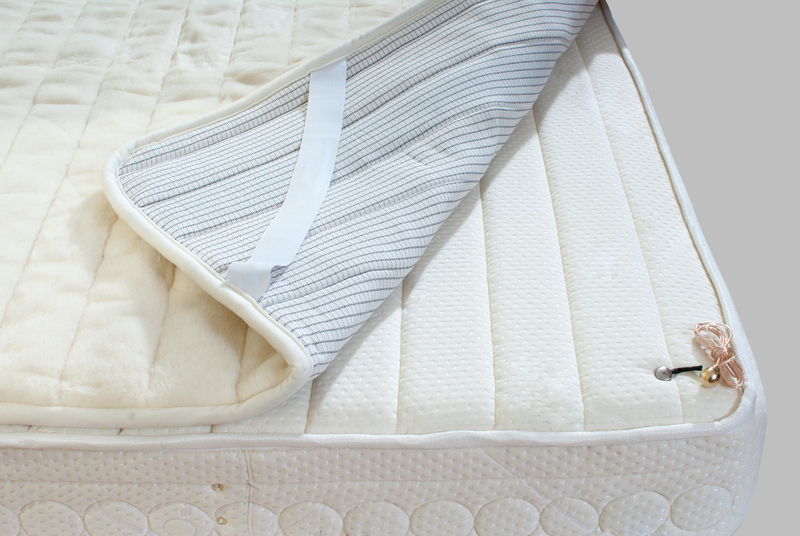Stovetop Rescue: Tactics for Banishing Burnt-On Residue
Posted on 22/05/2025
Stovetop Rescue: Tactics for Banishing Burnt-On Residue
Few kitchen nuisances are as stubborn and unsightly as burnt-on residue on your stovetop. Whether your cooktop is glass, ceramic, or classic coil, these tough, greasy stains can transform a beautiful appliance into a cleaning nightmare. But before you retreat or consider costly replacements, this comprehensive guide will equip you with the ultimate stovetop rescue tactics. Discover expert cleaning methods, preventive strategies, and the secrets to keeping your stovetop spotless and gleaming.
Understanding Burnt-On Residue: What Are You Dealing With?
Before diving into methods for banishing baked-on mess, it's helpful to understand what causes burnt-on food and residue in the first place. Often, it's a mix of splattered oil, sugary spills, and food particles that stick and char under constant heat. The result? Blackened, crusty patches that seem impossible to remove.
- Oil and Grease: These can bake onto the cooktop, especially when left unaddressed after cooking.
- Sugary or Starchy Spills: These adhere tightly and become caramelized with heat.
- Repeated Heating: With each use, leftover spots get progressively more stubborn.
Recognizing the type of residue can help you select the optimal stovetop cleaning method.

Essential Supplies for Stovetop Cleanup
Before you begin your stovetop rescue mission, gather the right tools and materials:
- Soft microfiber cloths or sponges (avoid abrasive pads unless specified)
- Baking soda and distilled white vinegar - excellent for natural cleaning
- Razor blade scraper (only for glass/ceramic cooktops, and with care)
- Dish soap (preferably grease-cutting)
- Commercial stovetop cleaner (choose products suitable for your stove type)
- Plastic scraper or spatula (for gentler scraping)
- Old toothbrush or detailing brush for crevices
- Paper towels or drying cloths
- Gloves to protect your hands from cleaning solutions
Safety Note: Always ensure your stovetop is completely cool before cleaning to avoid burns or damaging the surface.
Tactics for Banishing Burnt-On Stovetop Residue
Ready to tackle that stubborn grime? Below are multiple effective tactics for restoring your stove to brilliance. Choose the method best suited to your stovetop type, level of buildup, and your preference for natural or commercial cleaners.
1. Gentle Daily Cleaning: Preventative Maintenance
- After each use, once the cooktop cools, wipe it down with a damp microfiber cloth and a drop of dish soap.
- Follow up with a clean, dry towel to prevent water marks.
- This stops most spills from becoming baked-on disasters.
Tip: Make it a habit -- an ounce of prevention is worth a pound of scraping!
2. The Baking Soda and Vinegar Method: Natural Power
This eco-friendly cleaning duo is renowned for cutting through difficult cooked-on grime:
- Sprinkle baking soda generously over the affected areas.
- Drizzle distilled white vinegar over the baking soda and allow it to fizz for a few minutes.
- Let it sit for about 15-20 minutes to break down the residue.
- Wipe with a damp sponge or microfiber cloth, applying gentle pressure.
- Rinse and dry thoroughly.
For heavy buildup, repeat the process or let the baking soda and vinegar paste sit longer for enhanced effectiveness.
3. Steam Clean with Hot Cloths or Steamer
Sometimes burns are best banished with steam power:
- Soak a towel or thick cloth in hot water. Wring out excess, then lay it over the stain for 15 minutes to soften the residue.
- Wipe away loosened grime. For tough spots, use a plastic scraper.
- If you have a garment steamer or hand-held steam cleaner, treat the mess directly and wipe clean.
Warning: Never pour large amounts of water on electric or gas stovetops. Always use a damp, well-wrung cloth.
4. The Razor Blade Scrape (for Glass & Ceramics)
If you have a glass cooktop, this method is ideal for those truly stuck-on stains:
- Hold a new, sharp razor blade at a 45-degree angle against the surface.
- Gently scrape off the burnt crust, working slowly to avoid scratching.
- Wipe away debris with a clean, damp cloth.
Follow up with baking soda and vinegar or your favorite stovetop cleaner for a finishing shine.
5. Commercial Stovetop Cleaners: Fast & Effective
Some residues need specialized cleaning products:
- Choose a cleaner labeled safe for your stovetop material (e.g., "glass cooktop cleaner", "ceramic stove polish").
- Apply according to directions, often letting it sit to break down grime.
- Wipe with a microfiber cloth, repeating as needed.
Pro Tip: Commercial pastes and creams can even help buff out small scratches while cleaning.
6. Spot-Treat with Oil or Degreaser
- For grease stains, let a drop of cooking oil sit on the spot for a few minutes to loosen residue, then wipe clean.
- Use a strong, grease-busting dish soap or commercial degreaser for persistent oily stains.
7. Cleaning Stove Grates and Burners
Don't forget the removable components:
- Soak grates and burners in hot, soapy water with a sprinkle of baking soda.
- Scrub with a non-abrasive brush or old toothbrush.
- Rinse and dry completely before reassembly.
- For exceptionally tough deposits, run a cleaning cycle in the dishwasher (if manufacturer permits).
Special Considerations for Different Stovetop Types
Not all stovetops are created equal; cleaning techniques vary by surface. Here's how to care for each type:
Glass or Ceramic Cooktops
- Never use steel wool or abrasive pads -- these scratch the delicate surface.
- Use only approved creams, scrapers, and microfiber cloths.
- Immediate wipe-up prevents etching and permanent stains.
Gas Stovetops
- Remove grates and caps for thorough cleaning.
- Wipe surrounding area with a damp, soapy cloth. Use toothpicks or pins for cleaning burner holes.
- Double-check all parts are dry and reassembled correctly.
Electric Coil Stovetops
- Remove drip pans and coils as possible.
- Soak and scrub drip pans with baking soda, dish soap and hot water.
- Wipe coils with a damp cloth only when disconnected and cooled.
Preventing Burnt-On Residue: Proactive Stovetop Maintenance
The best cure is prevention. Integrated smart habits minimize buildup and keep your stovetop look its best.
- Wipe up splatters right away -- even small droplets can char quickly if left.
- Use splatter guards when frying or boiling over-prone dishes.
- Deep-clean weekly to catch hidden or missed spills before they bake on.
- When simmering sauces or sugary foods, place a spoon rest or tray nearby to minimize drips.
- Check pots and pans for clean, flat bottoms -- debris underneath can burn on the stove surface.
- Replace worn, melted burner liners or cracked glass quickly.
The Benefits of a Sparkling, Residue-Free Stovetop
A clean stovetop is about more than aesthetics. Here's why regularly banishing burnt-on residue is a great investment:
- Improved efficiency: Burnt-on buildup can interfere with heat transfer, meaning food cooks unevenly or takes longer.
- Fire safety: Grease and residue are a fire risk if left unchecked.
- Hygiene: Old food spills can harbor bacteria and attract pests.
- Longevity: Routine cleaning prevents corrosion, rust, and permanent staining.
- Pride: There's nothing like a pristine cooktop to inspire you in the kitchen!

Frequently Asked Questions: Stovetop Cleaning Secrets
Is it safe to use a razor blade or metal scraper on any stovetop?
No. Only use a razor blade or metal scraper on glass or ceramic cooktops, and always at a sharp angle. Avoid metal tools on gas or electric stoves as they can chip, scratch, or create hazards. Use plastic scrapers for other surfaces.
Can I use oven cleaner on stovetop residue?
Most oven cleaners are too caustic for glass, ceramic, or painted finishes and can discolor or damage them. Always choose products labeled specifically for stovetop use.
Why does residue keep coming back after I clean my stovetop?
Lingering sticky spots may need a second or third pass. If residue returns quickly, examine your cooking habits (frequent boiling over or using too much oil) and improve preventative cleaning.
What household products are safe for stovetop cleaning?
- Baking soda and vinegar: Excellent natural duo for most surfaces.
- Lemon juice: Good for breaking down grease and stains (avoid on marble or stone).
- Dish soap: Always safe and strong on grease.
How often should I deep-clean my stovetop?
Aim for a deep clean weekly if you cook often, and address spills immediately for best results.
Wrap-Up: Make Stovetop Rescue Your Kitchen Habit
Banishing burnt-on residue from your stovetop doesn't require magic -- just the right combination of tools, patience, and a touch of elbow grease. Whether you prefer natural remedies like baking soda and vinegar or commercial solutions for rapid results, the key is consistent, thorough care.
Make stovetop rescue a weekly highlight in your kitchen routine. With these expert tactics, you'll enjoy a gleaming, efficient, and inviting cooking space every day!
- Don't forget: Prevent, treat promptly, and use the right methods for your appliance.
- Enjoy the satisfaction of a residue-free, sparkling stovetop -- your culinary creativity deserves it!
Searching for more tips? Bookmark this guide as your go-to resource for stovetop cleaning and maintenance.




